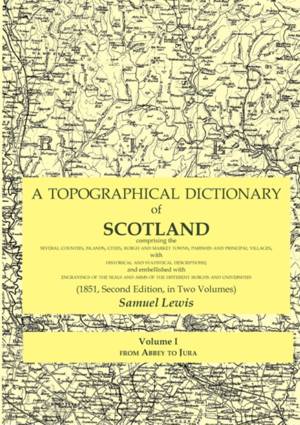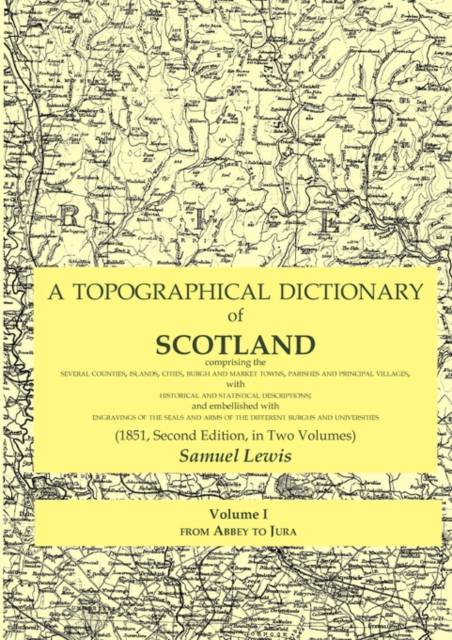
- Afhalen na 1 uur in een winkel met voorraad
- Gratis thuislevering in België vanaf € 30
- Ruim aanbod met 7 miljoen producten
- Afhalen na 1 uur in een winkel met voorraad
- Gratis thuislevering in België vanaf € 30
- Ruim aanbod met 7 miljoen producten
Zoeken
A Topographical Dictionary of Scotland comprising the several counties, islands, cities, burgh and market towns, parishes and principal villages, with historical and statistical descriptions; and embellished with engravings of the seals and arms of the dif
Samuel Lewis
Paperback | Engels
€ 41,95
+ 83 punten
Uitvoering
Omschrijving
Volume I: from Abbey to Jura. The title of this very comprehensive Gazetteeer, published in two volumes in 1851, illustrates the scope of the Editor's remit. The result is over 1200 pages of densely packed information, utilising the best contemporary sources. It was published at the time when the railways had begun to make their mark on the landscape, and to re-shape the way in which people thought about travel. The first Censuses had been taken, but were still quite modest in the information provided. For the family historian, who is working with this newly mobile population, learning about the particular circumstances of a specific parish can still be a little difficult, especially for the unfamiliar in another part of the country. Why did a family move from their roots to another place? How had agriculture changed in an area? The answer can often be found in the descriptive text which follows the necessary details of population and location.
Specificaties
Betrokkenen
- Auteur(s):
- Uitgeverij:
Inhoud
- Aantal bladzijden:
- 618
- Taal:
- Engels
Eigenschappen
- Productcode (EAN):
- 9781845300883
- Verschijningsdatum:
- 14/01/2011
- Uitvoering:
- Paperback
- Formaat:
- Trade paperback (VS)
- Afmetingen:
- 210 mm x 297 mm
- Gewicht:
- 1460 g

Alleen bij Standaard Boekhandel
+ 83 punten op je klantenkaart van Standaard Boekhandel
Beoordelingen
We publiceren alleen reviews die voldoen aan de voorwaarden voor reviews. Bekijk onze voorwaarden voor reviews.








